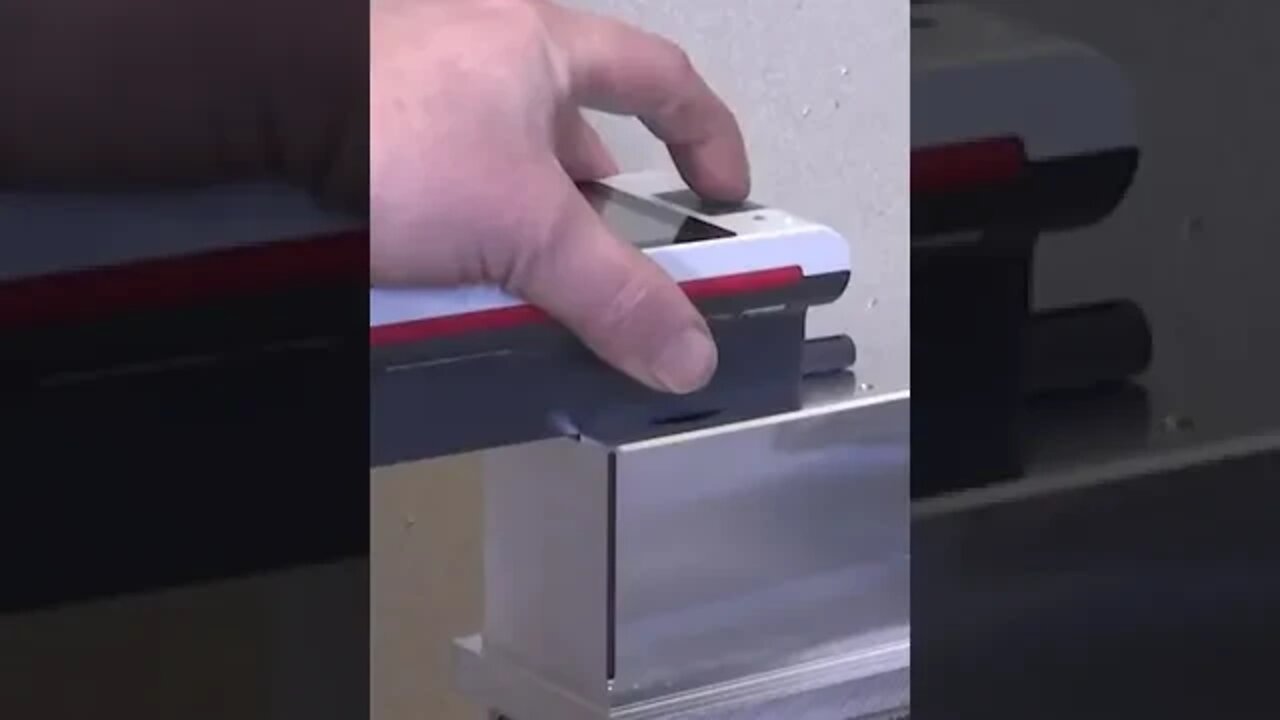Premium Only Content

Checking surface finish in the machine
Mahr MarSurf PS 10 Mobile Roughness Measuring Instruments
Visit the link below to try it yourself…
https://www.penntoolco.com/mahr-marsurf-ps-10-mobile-roughness-measuring-instruments/
Amazing tool for CNC Machining
Computer Numerical Control (CNC) machining is a manufacturing process in which pre-programmed computer software dictates the movement of factory tools and machinery. The process can be used to control a range of complex machinery, from grinders and lathes to mills and CNC routers. With CNC machining, three-dimensional cutting tasks can be accomplished in a single set of prompts.
With CNC machining, pre-programmed computer software dictates the movement of factory tools and machinery
The CNC process runs in contrast to — and thereby supersedes — the limitations of manual control, where live operators are needed to prompt and guide the commands of machining tools via levers, buttons and wheels. To the onlooker, a CNC system might resemble a regular set of computer components, but the software programs and consoles employed in CNC machining distinguish it from all other forms of computation.
If you’re interested in utilizing CNC manufacturing to produce various products, find out more about how CNC machining and CNC programming works. You might also want to know about the main types of CNC machinery and the kind of work it can do to see if it can meet your needs.
What is CNC Machining?
When a CNC system is activated, the desired cuts are programmed into the software and dictated to corresponding tools and machinery, which carry out the dimensional tasks as specified, much like a robot.
In CNC programming, the code generator within the numerical system will often assume mechanisms are flawless, despite the possibility of errors, which is greater whenever a CNC machine is directed to cut in more than one direction simultaneously. The placement of a tool in a numerical control system is outlined by a series of inputs known as the part program.
With a numerical control machine, programs are inputted via punch cards. By contrast, the programs for CNC machines are fed to computers through small keyboards. CNC programming is retained in a computer’s memory. The code itself is written and edited by programmers. Therefore, CNC systems offer far more expansive computational capacity. Best of all, CNC systems are by no means static since newer prompts can be added to pre-existing programs through revised code.
CNC Machine Programming
In CNC manufacturing, machines are operated via numerical control, wherein a software program is designated to control an object. The language behind CNC machining is alternately referred to as G-code, and it’s written to control the various behaviors of a corresponding machine, such as the speed, feed rate and coordination.
Basically, CNC machining makes it possible to pre-program the speed and position of machine tool functions and run them via software in repetitive, predictable cycles, all with little involvement from human operators. In the CNC machining process, a 2D or 3D CAD drawing is conceived, which is then translated to computer code for the CNC system to execute. After the program is inputted, the operator gives it a trial run to ensure no mistakes are present in the coding.
Due to these capabilities, the process has been adopted across all corners of the manufacturing sector, and CNC manufacturing is especially vital in the areas of metal and plastic production. Find out more about the types of machining systems used and how CNC machine programming fully automates CNC manufacturing below:
Open/Closed-Loop Machining Systems
During the CNC manufacturing process, position control is determined through an open-loop or closed-loop system. With the former, the signaling runs in a single direction between the CNC controller and motor. With a closed-loop system, the controller is capable of receiving feedback, which makes error correction possible. Thus, a closed-loop system can rectify irregularities in velocity and position.
In CNC machining, movement is usually directed across X and Y axes. The tool, in turn, is positioned and guided via stepper or servo motors, which replicate exact movements as determined by the G-code. If the force and speed are minimal, the process can be run via open-loop control. For everything else, closed-loop control is necessary to ensure the speed, consistency and accuracy required for industrial applications, such as metalwork.
In CNC machining, movement is usually directed across X and Y axes
CNC Machining Is Fully Automated
In today’s CNC protocols, the production of parts via pre-programmed software is mostly automated. The dimensions for a given part are set into place with computer-aided design (CAD) software and then converted into an actual finished product with computer-aided manufacturing (CAM) software.
#machining #cncmachining #machinist
-
 LIVE
LIVE
LFA TV
13 hours agoLIVE & BREAKING NEWS! | THURSDAY 10/23/25
4,034 watching -
 LIVE
LIVE
Nikko Ortiz
1 hour agoHalloween Death Devices In Real Life... |Rumble Live
135 watching -

Benny Johnson
2 hours agoIllegal Alien Trucker Released By Biden KILLS Three in DEADLY DUI Crash, California License SCANDAL
26.6K37 -
 LIVE
LIVE
Major League Fishing
7 days agoLIVE! - Fishing Clash Team Series: Patriot Cup - Day 2
150 watching -
 LIVE
LIVE
Side Scrollers Podcast
3 days ago🔴FIRST EVER RUMBLE SUB-A-THON🔴DAY 3🔴WAKE YOUR ASS UP!
1,188 watching -

The Big Mig™
2 hours agoTrump Invades Venezuela
2.86K8 -
 1:33:59
1:33:59
Graham Allen
3 hours agoDems PANIC as Shutdown Backfires! Fake News MELTS Down Over New Pentagon Press Corps!
101K59 -
 LIVE
LIVE
Badlands Media
9 hours agoBadlands Daily: October 23, 2025
2,509 watching -
 3:01:40
3:01:40
Wendy Bell Radio
7 hours agoWho Is Today's Democrat?
51.6K90 -
 1:08:22
1:08:22
The Mike Schwartz Show
14 hours agoTHE MIKE SCHWARTZ SHOW with DR. MICHAEL J SCHWARTZ 10-23-2025
10.5K5